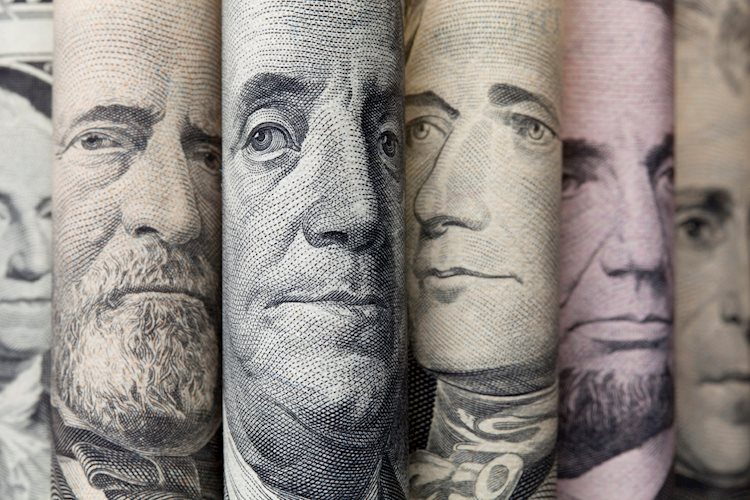Now that crypto is also present in traditional regulated financial markets thanks to ETFs, in theory, banks could also invest in them.
Although it is usually believed that banking activity focuses on the custody of deposits from individuals and companies, and on credit, in reality, banks also operate as investors in the financial markets.
Crypto ETF and other funds: access for banks
ETFs are literally Exchange Traded Funds, which are funds that can be traded on the stock exchange.
Technically, they are funds that issue shares, which in turn can be bought and sold on traditional financial markets.
However, there are not only Exchange Traded Funds, but there are also many other types of different funds.
One of these, for example, is that of Sovereign Wealth Funds (SWF), which are state-owned investment funds often financed by central banks. This is a type that belongs to the large category of the so-called public ownership sovereign funds.
Through SWFs, central banks, and therefore States, can also invest in the markets.
China alone owns and controls 4 of the ten main SWF in the world.
The investments of SWF
According to a research by TheCityUK, in 2023 the funds managed worldwide by SWFs reached a total value of approximately 12.7 trillion dollars.
For example, the funds under management of the largest asset manager in the world, BlackRock, on the same date were worth about 10,000 billion.
SWF, therefore, taken as a whole, are an extremely important entity in the financial markets and cannot be absolutely ignored.
In 2023 alone, the SWF globally invested 125 billion dollars.
Although this figure turned out to be 20% lower than that of 2022, on average from 2018 to 2023 the annual investments of SWFs have grown by 16.4%.
At this moment, there is no certain news of SWF investments in crypto ETFs; however, if central banks wanted to invest in cryptocurrencies without having to include them directly in their balance sheets, they could do so through these vehicles.
The report by TheCityUK reveals that overall the assets owned by SWFs consist of 32% in equities, 28% in fixed income instruments, 10% in direct strategic investments, 4% in cash, but 26% in alternative investments.
The share of AUM (asset under management) at 26% for alternative investments seems to leave ample room for crypto.
The advantage of crypto ETFs for banks
These sovereign funds have quite a few difficulties investing directly in the crypto markets, so much so that it is reasonable to assume that they simply do not do it.
Instead, crypto ETFs are not only derivatives present in traditional financial markets alongside other ETFs, such as those on gold and oil, but they also turn out to be fully regulated financial products.
Therefore, the SWF might not have particular issues investing in crypto ETFs, provided, of course, that they have made the decision to integrate them into their own assets.
However, according to recent statements from BlackRock, the issuer of the main ETF on Bitcoin in the world (IBIT), to date, there are still relatively few individuals who have invested in crypto ETFs.
This suggests that in the future, many other entities that are currently completely out of the crypto market could enter it indirectly thanks to ETFs.
Banks and crypto
For a central bank, it might make sense to allocate some capital to Bitcoin, and to a lesser extent also to other crypto.
In particular, as BlackRock always maintains, for a classic 64/40 portfolio, it might make sense to allocate between 1% and 2% in crypto ETFs.
The SWFs actually do not have the classic 60/40 portfolio at all, also because they allocate about 10% on direct strategic investments. However, excluding these, and the cash, they have 33% of the rest allocated on fixed income products, and the remaining 67% on equities and alternative investments. Therefore, it is not a very different allocation, if direct investments are excluded.
At this point, it is at least possible to imagine that of that 26% of capital invested in alternative instruments by SWFs, a small part could theoretically also be invested in crypto ETFs.
As of today, it might still be a bit premature to imagine this, but at least now it is possible.
The impact on crypto markets
It must be said that 1% of 125 billion dollars is 1.25 billion, which is a figure that, annually, is much lower than, for example, that invested by MicroStrategy alone in 2024 on Bitcoin.
Therefore, on a strictly financial level, their entry into the crypto market through ETFs could hardly produce significant consequences.
Quite a different impact, however, could be had on the narrative, especially if these funds controlled by central banks decided to invest in Bitcoin as a strategic reserve.
The SWF are not activities dedicated to trading, but real investment funds that invest primarily to build a portfolio. In fact, this is why their overall AUM is still so high.
While on one hand it still seems very unlikely that central banks could buy Bitcoin on crypto markets and hold them in non-custodial wallets, they might instead be less hesitant to authorize their SWFs to allocate a small percentage of capital on crypto ETFs.
As of today, this turns out to be just a hypothesis, and nothing more, but if on one hand it may seem unlikely, on the other hand it finally appears at least plausible.
Source: https://en.cryptonomist.ch/2024/12/15/what-if-the-banks-bought-crypto-etfs/








Leave a Comment